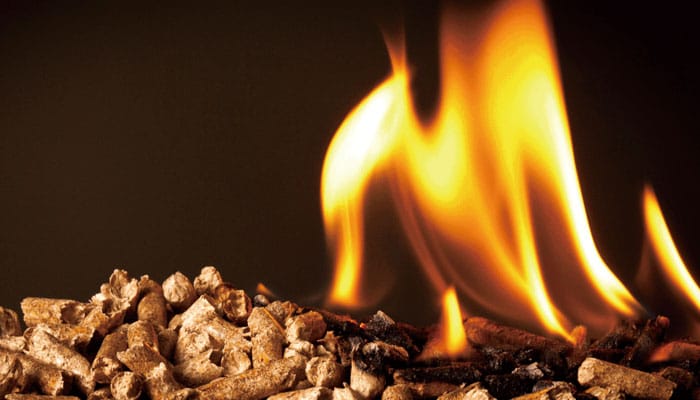Industrial analysis indicators for biomass wood fuel pellets
1. Wood pellet fuel characteristics
Wood pellet fuel is a type of biomass fuel. It is made by compressing wet sawdust and wood chips. These particles are similar in shape and size, about 1 inch long and 1/4-5/16 inch in diameter. Unlike other biomass fuels, wood pellets are easier to use and require less storage space. Their deliveries are safer and more advantageous than fossil fuels because of their high caloric content, nearly 7750 Btu (British thermal unit) per pound. Its moisture content is about 4-6%. These properties and plant lignin help to maintain a compact structure, making wood pellets the fuel of choice.
Sawdust particle grades are not classified by wood type. Traditional wood pellets are classified according to the ash content produced. There are three levels under this category:
The first two grades can be sold for commercial, industrial or residential use. They are very suitable for all types and sizes of boilers equipped with automatic ash removal systems. The third grade of particles with an ash content of more than 3% is suitable for industrial applications.

2. Industrial analysis indicators of biomass wood pellets
In the trade of biomass wood pellets, it often happens that buyers and sellers first check the indicators. So what are the commonly used biomass wood pellet indicators?
The indicator of biomass particles is the test result obtained after a certain weight of particle samples are tested by a professional inspection agency. It is composed of two major parts: industrial analysis indicators and elemental analysis indicators. Industrial analysis indicators are necessary indicators for testing. , And element analysis can be tested as needed.
Broadly speaking, the industrial analysis of biomass particles includes four analysis items including moisture (M), ash (A), volatile (V) and fixed carbon (FC). And to make a judgment on the ash melting point, it also includes the determination of the total sulfur content and calorific value of biomass particles, which is also called the whole industry analysis of biomass particles.
According to the analysis results, it is possible to roughly understand the organic matter content and calorific value of biomass particles, so as to preliminarily judge the types of biomass, processing and utilization effects, and industrial uses. According to industrial analysis data, the biomass particles can also be calculated. Heat etc.
Industrial analysis of biomass wood pellets is mainly used for production and sales and users' control of product quality.
(1) Moisture (M)
Biomass wood is a porous solid that contains more or less water. The presence of water has a great influence on the thermochemical conversion of biomass. Therefore, moisture is one of the most basic analysis indicators for biomass particles. If the water content is high, it will affect the calorific value and reduce the effective calorific value.
(2) Ash content (A)
Ash is the ash of the residue left after the complete combustion of all combustible substances in biomass and a series of complex reactions such as decomposition and combination of minerals in biomass at a certain temperature. It refers to the residue left after the biomass is completely burned. Residue. Ash and its impurities will have a certain impact on whether the boiler is coking.
(3) Volatile matter (V)
Volatile matter refers to all gaseous products obtained by heating biomass wood pellets to a certain temperature under the condition of isolating air, and staying at this temperature for a period of time, after the organic matter is heated to decompose. Generally speaking, the higher the volatile content, the better the combustion performance of the particles.
(4) Fixed carbon (FC)
Fixed carbon in biomass refers to the residue after removing moisture, ash, and volatile components from biomass. Like ash, fixed carbon is not all an inherent component of biomass. To be precise, it is also a thermal decomposition product, which contains not only carbon, but also hydrogen, oxygen, nitrogen, sulfur and other elements.
(5) Calorific value (Q)
The calorific value of biomass wood pellets is divided into low calorific value and high calorific value, and the unit is MJ/kg.
High calorific value (Qgr) refers to the total heat released when 1Kg of fuel is completely burned, including the latent heat of vaporization released by water vapor in the flue gas that has condensed into water; low calorific value (Qnet) refers to the calorific value from high When the latent heat of vaporization of water vapor in the flue gas is deducted, the calorific value of the fuel is measured.
Because the low calorific value is the net calorific value after removing all the potential calorific value, so in the pellet trade and use, everyone usually uses the low calorific value as the calorific value standard.
(6) Total sulfur (S)
After the raw materials are processed, the actual sulfur content of the pellets is extremely low, which fully meets the national environmental protection requirements for boiler combustion.
In your daily production and business activities, you can pay more attention to the above main indicators in order to effectively control the quality of granular products and the effectiveness of granules.
3.Faqs about biomass wood pellets
(1)How much does a hot selling 110kw 1 ton per hour biomass wood pellet mill machine cost?
RICHI new design hot selling 110kw 1 ton per hour biomass wood pellet mill machine price is about 30000USD-35000USD.
(2)What is needed to start a 2 ton per hour wood pellet plant for biomass fuel pellets?
RICHI factory offered easy to handle small capacity 2 ton per hour wood pellet production line need wood chippers and shredders,good quality 37kw wood hammer mill for sawdust,wood pellet rotary dryer for pellet plant,biomass industrial wood pellet machine for pellet production,pellet cooler machine,etc.
If you want to built one complete pellet production line in your country, pls send the inquiry to us. We will customized design according to your requirement.



